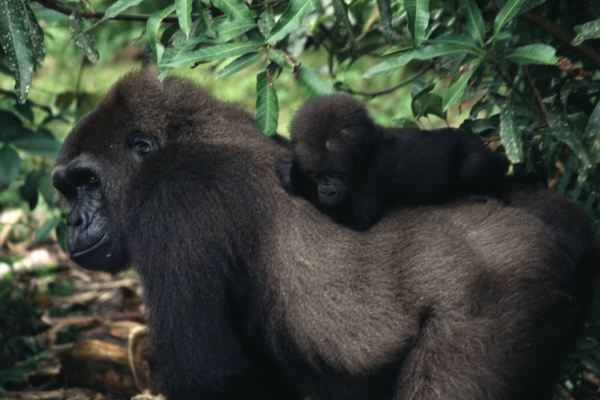Business news round-up: August 2021

Africa's latest business and investment news, including details on the fate of South Africa's embattled Mango Airlines, Uganda's dairy dispute with Kenya and Tanzania and Gabon's newest Unesco-listed reserve.
Pretoria
Mango Airlines, a popular low-lost carrier, is threatening unions and their lawyers with legal action for wanting to place the faltering carrier under business rescue.
The case for whether the South African Airways (SAA) subsidiary will go into business rescue or face bankruptcy went before the high court following the filing of an urgent application from organisations opposed to the management’s desire to have it liquidated.
In virtual court proceedings, Mango asked the South Gauteng High Court in Johannesburg not to grant an urgent application by three labour unions to have the airline placed in business rescue, but to instead allow it to do so voluntarily.
The National Union of Metalworkers of SA (Numsa), the South African Cabin Crew Association (Sacca) and the Mango Pilots’ Association (MPA) have asked the court to rescind liquidation proceedings and are seeking to have Ralph Lutchman appointed as the business-rescue practitioner.
The unions represent the majority of Mango’s 750 employees who have not been paid for several months, while the airline awaits 819 million rands ($56 million) in state aid that was due to be released to the carrier following the passing of a Special Appropriations Act more than a month ago.
The state-owned airline is awaiting a cash injection from government. But unions believe the Public Enterprise Department has no intention of keeping the airline afloat.
President of the South African Crew Association Zazi Sibanyoni-Mugambi said: ‘We believe from a letter that you would have seen in Mango’s affidavit that the DPE had no intention of rescuing Mango and instead wanted to wind it down. So this we found out after we had wrote the business rescue application, which just confirms our fears that Mango was not going to be rescued, so we believe this is a good move on our part.’
In a joint statement, the three unions claimed the government had bridging finance available to pay salaries, but wanted the unions to withdraw their application before paying it out.
The labour unions have accused the South African government of strong-arm tactics and claimed that the shareholder representative, the Department of Public Enterprises (DPE), was unwilling to join them in the bankruptcy application, despite an official announcement that there was stakeholder agreement that Mango should enter bankruptcy protection.
‘The shareholder is insistent that they be the sole applicant and appoint their own sole business-rescue practitioner. One can only assume ulterior motives are at play given that there is no further direction given. Why do they not want to work with us?’ asked SACCA president Zazi Nsibanyoni-Mugambi.
According to the unions, acting Mango chief executive William Ndlovu informed them earlier this year that due to outstanding funding from its shareholder SAA its lessors were being intolerant of missed payment deadlines.
Among the explanations for Mango’s decision to opt for business rescue, Ndlovu told the high court that before country’s lockdown, the airline’s operating profit for 2019 was over R977.5 million ($56.5 million).
Meanwhile, Mango’s 750-plus workers have not been paid for months while management argues that global and national lockdowns have forced the airline into an operating loss.
Management estimates that about $46.5 million is needed to keep it as a going concern.
SAA said that it has been significantly affected by Covid-19 lockdowns and travel bans.
The airline said in a responding affidavit that the pandemic restrictions have resulted in an operating loss in the current year.
It was forced to suspend all flights from March to June last year and generated no revenue in that period.
Labour unions are concerned that workers are being shunted aside with no recourse. But members of the Mango Pilots’ Association are optimistic that the court will rule in favour of the airline’s workers.

A female gorilla with her young at Gabon's Ivindo National Park.
Libreville
Ivindo National Park was recently listed as a Unesco World Heritage Site, providing much-needed international support for Gabon as it continues its efforts towards halting deforestation and attracting lucrative eco-tourism investment.
The national park, located in east-central Gabon, is the second nature reserve to be declared a World Heritage Site in Gabon, a major eco-tourist destination pre-Covid. The first, Lope Park, was recognized by Unesco back in 2007.
Ivindo is home to several endemic species and some emblematic mammals, now threatened, such as the forest elephant, gorilla, chimpanzee, leopard and three species of pangolins. Its many rapids and waterfalls bordered by pristine rainforests, make it a landscape of great aesthetic value, according to Unesco.
Ninety per cent of the central African country is still covered in dense forest.
Gabon has 13 national parks, which cover 11 percent of its territory, and 20 marine protected areas.
For several years, Gabonese authorities have developed a policy to protect the Central African rainforest, called ‘the second lung of the Earth’ after the Amazon.
While the site is almost untouched, a Unesco World Heritage designation ensures more legal protection as well as funding for its conservation.
It is hoped the announcement will also result in increased popularity among would-be tourists.
Kampala
Uganda has appealed to Kenya and Tanzania to remove prohibitive levies placed on its dairy products, saying it could jeopardise trade relations and the spirit of the East African Community (EAC).
The Minister of Agriculture, Animal Industries and Fisheries, Frank Tumwebaze, has asked both countries, to abolish the hefty 16 per cent import tax following recent bilateral talks meant to resolve this impasse to allow Ugandan milk into their markets.
Since 2020, Uganda has struggled to have its dairy products sold in the two East African member states, something the minister said is a barrier to the EAC spirit and regional trade relations. More than a year later, this remains unresolved.
As per the EAC Common Market Protocol, so long as Ugandan products are produced in the country, they are permitted to enter the Kenyan market without any hindrance.
The Ugandan Minister of Agriculture raised concerns of the ongoing taxes and levies charged on its dairy products despite negotiation efforts.
He also complained about the 1.75 per cent of FOB (Free on Board) application fees to the Tanzania Dairy Board and 18 per cent Value Added Tax for all dairy products.
Uganda maintains that if there are issues that need to be addressed, they can be handled through bilateral arrangements or the regional trade agreements within the East African Community instead of using arbitrary means such as high taxes.
Ugandan milk products have been restricted in the Kenyan market since January 2020.
‘This is despite the fact that Ugandan government formally protested these actions and both countries are signed up to the East African Community framework,’ said Tumwebaze, in a communiqué to Peter Gatirau Munya, Kenya’s cabinet secretary, Ministry of Agriculture, Livestock, Fisheries and Co-operatives.
In April, a joint committee was set up to solve the impasse between Kenya and Uganda over dairy products but the matter was never resolved.
Since 2019 when Kenya began restricting Uganda dairy products, there have been frustrations among dairy exporters on the slow rate of the negotiations that have strained relations between the two neighbouring countries.
Nairobi
The new Ikolomani Gold Refinery, expected to be launched by President Uhuru Kenyatta in Kakamega County during his much-anticipated visit to western Kenya, is seen as a game changer for artisanal miners in the region. Miners are routinely exploited by middlemen in the torturous small-scale gold prospecting business.
The project, estimated to cost Sh100 million ($1 million), features prominently on President Kenyatta’s itinerary during which he is expected to commission several development projects.
‘The miners will be allowed to deliver their gold directly to the refinery,’ said Mining Cabinet Secretary John Munyes, adding that the process will meet international standards.
The new mine is expected to be completed and become operational within 18 months and will potentially eliminate both the black market and the middlemen that exploit local miners by offering lower prices for their gold.
The county government handed over the title deed to a 10-acre parcel of land in Lidambidza, in the Ikolomani sub-county, for the project.
Kakamega’s governor, Wycliffe Oparanya, said the memorandum of understanding between the county and the ministry outlines how the devolved unit, the national government and the local community will benefit from the project.
‘The aim is to improve the livelihoods of the community, uplift the regional economy and create direct and indirect jobs for wealth creation,’ he said.
Governor Oparanya added the refinery will offer employment opportunities to hundreds of youth exploited by cartels. ‘The national government has identified an investor who will put up a large mining factory here at Ikolomani.
This will offer employment opportunities to the youth. The artisan miners will also learn modern skills from the established miners who are coming.’
The national government has provided $500,000 to support the project.
Consultants interested in the tender are expected to review the information regarding the location of minerals and analyse production potential plus the commercial, economic and social viability of the expected refinery.
‘Potential consultants have until November 8 to express their interest.
Successful consultants will be given 90 days to finish the study and deliver the report,’ Oparanya explained.
The refinery is expected to open up skilled mining for locals who have been dying in tunnels due to lack of proper mining techniques.
According to the Ministry of Petroleum and Mining at least two gold miners die in the mines every month in Kakamega and Vihiga counties.
The ministry also indicated that five miners in Kakamega and one in Vihiga lost their lives in the tunnels in May alone.
However, the figures could be much higher as some miners who work without permission fail to report deaths, fearing that the authorities might follow up on them and shut down the mines.
Currently, the allure of quick money compels miners to sell a gram of gold for around $45 to middlemen, who later sell to official traders at inflated prices.
Western region mining officer Samuel Too said the region has about 8,000 miners, with many working as casual labourers.
‘Most are jobless youth who engage in the mining venture without modern mining tools.’
Munyes believes the factory will offer a bigger earning potential for small-scale miners in Kakamega.
‘In the next few months, we shall witness a beehive of activities in Kakamega and many people will benefit from the gold refinery. Amateur miners will now upscale their techniques from the established operators.’
The government is targeting a 10 per cent share in Vision 2030 through value addition, implementation of mining and minerals policy and the Mining Act 2016.
Thirty per cent of proceeds from the refinery will go to the county government.



